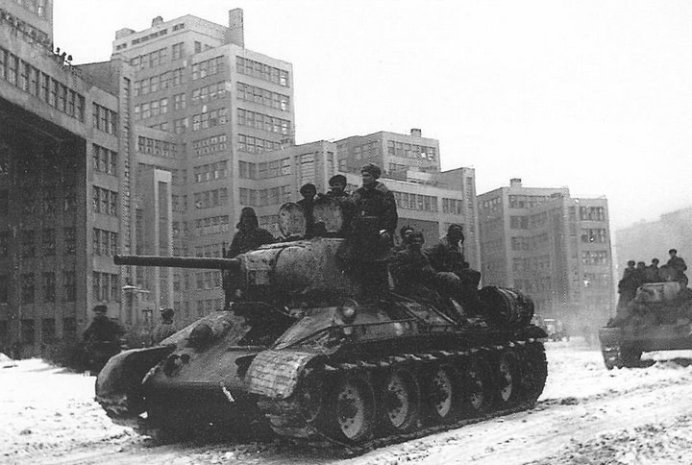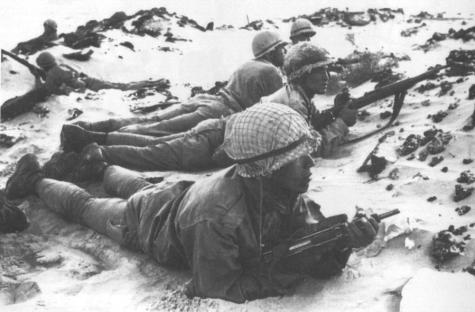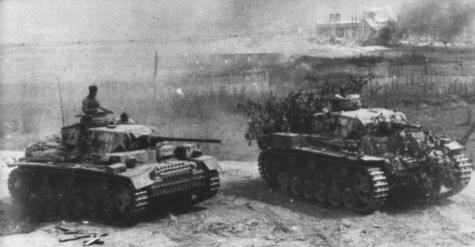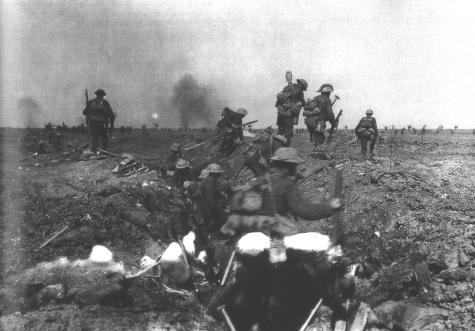
Now, some of the data provided in the previous posts were muddied by the fact that there were serious differences in the performances of the opposing armies. This is true for the German Army versus the Soviet Army in 1943, the Israeli Army versus the Arab armies in 1956-1973, and for the U.S. Army, USMC and allied armies versus the Iraqi Army in 1991. To a much lesser extent, it is also true for the German Army versus the U.S and UK armies up through the middle of 1944. This is discussed in some depth in my book War by Numbers.
As such, this seems like also a good time to again briefly address this issue. We need to break down the force ratio tables by which nationality is attacking. First let us look at the Eastern Front World War II data:
World War II, Kharkov and Kursk 1943 (180 cases)
German Army attacking the Soviet Army – culled data set (100 cases)
Force Ratio…………………Percent Attacker Wins……………..Number of Cases
0.49………………………………..0%…………………………………………….1
0.58 to 0.95………………………90……………………………………………..10
1.01 to 1.49……………………..100……………………………………………..30
1.52 to 1.96………………………95……………………………………………..19
2.09 to 2.42…………………….100……………………………………………….6
2.57 to 2.87…………………….100……………………………………………….7
3.00 to 3.45…………………….100……………………………………………….8
3.60 to 3.79…………………….100……………………………………………….2
4.31 to 5.85………………………92……………………………………………..13
6.48 to 6.63…………………….100……………………………………………….2
8.60 to 11.41…………………..100……………………………………………….2
In these hundred battles, when the Germans are on the offensive, they win 96% of the time. That is a pretty impressive result. The full data set with another 28 cases that include “limited action” and “limited attack” are listed below.
German Army attacking the Soviet Army – complete data set (128 cases)
Force Ratio………………….Percent Attacker Wins…………………Number of Cases
0.49…………………………………….0%…………………………………………….1
0.58 to 0.95…………………………..47…………………………………………….19
1.01 to 1.49…………………………..88…………………………………………….34
1.52 to 1.96…………………………..77…………………………………………….26
2.09 to 2.42…………………………..86………………………………………………7
2.57 to 2.98…………………………100………………………………………………9
3.00 to 3.45…………………………100………………………………………………8
3.60 to 3.79…………………………100………………………………………………3
4.31 to 5.85…………………………..71…………………………………………….17
6.48 to 6.63…………………………100………………………………………………2
8.60 to 11.41……………………….100………………………………………………2
Out of these 128 battles, when the Germans attack they win 79% of the time. This is still impressive by any standard. Because of the additional cases being “limited action” and “limited attack” there are a lot of drawn engagements in this data set. The “culled” data set has three defender victories and one draw (and 96 attacker wins). This one has five defender victories and 22 drawn engagements. Now, let us look at how the Soviets do in response. These are the opposing forces on the same battlefield, similar terrain, similar weather, and often on the same day
Soviet Army attacking the German Army – culled data set (41 cases)
Force Ratio…………………Percent Attacker Wins…………………Number of Cases
0.40 to 0.43……………………..67%………………………………………………..3
0.51 to 0.99……………………..18…………………………………………………11
1.02 to 1.46……………………..25…………………………………………………16
1.53 to 1.96……………………..50…………………………………………………..4
2.08 to 2.31……………………..50…………………………………………………..4
2.79 to 2.89……………………..33…………………………………………………..3
This is a very different result than what we see for the Germans. Out of the 41 attacks, the Soviets win 13 times or 32%. If I compare the German results of their attacks at odds below three-to-one, I have the Soviets succeeding 32% of the time while the Germans are succeeding 96% of the time (70 out of 73 attacks). Hard to argue that there is not a performance difference as the two armies in 1943 were roughly equivalent in armament and the mix of armaments. Each of the engagements from Kursk are presented in considerable detail in my books on the battle.[1]
The same data, but including “limited action” and “limited attack” is shown below:
Soviet Army attacking the German Army – complete data set (52 cases)
Force Ratio…………………Percent Attacker Wins………………….Number of Cases
0.40 to 0.49……………………..50%…………………………………………………4
0.51 to 0.99……………………..14………………………………………………….14
1.01 to 1.46……………………..19………………………………………………….21
1.53 to 1.96……………………..40……………………………………………………5
2.08 to 2.31……………………..50……………………………………………………4
2.66 to 2.89……………………..25……………………………………………………4
With this data set, out of 52 engagements the attacker still only won 13 times, or 25%.
[1] See Lawrence. Kursk: The Battle of Prokhorovka (2015) and The Battle of Prokhorovka (2019). The first book lays out all 192 engagements from the offensive in the south while the second book provided the detailed data for 76 of the engagements. Each engagement has a separate engagement sheet that lays out the forces involved, their strength and their losses. There is a detail narrative of their operations in the text of the books. If anyone has any questions over the accuracy or interpretation of this data, it is presented in these books, developed primarily from the unit records of both sides (primary sources).








